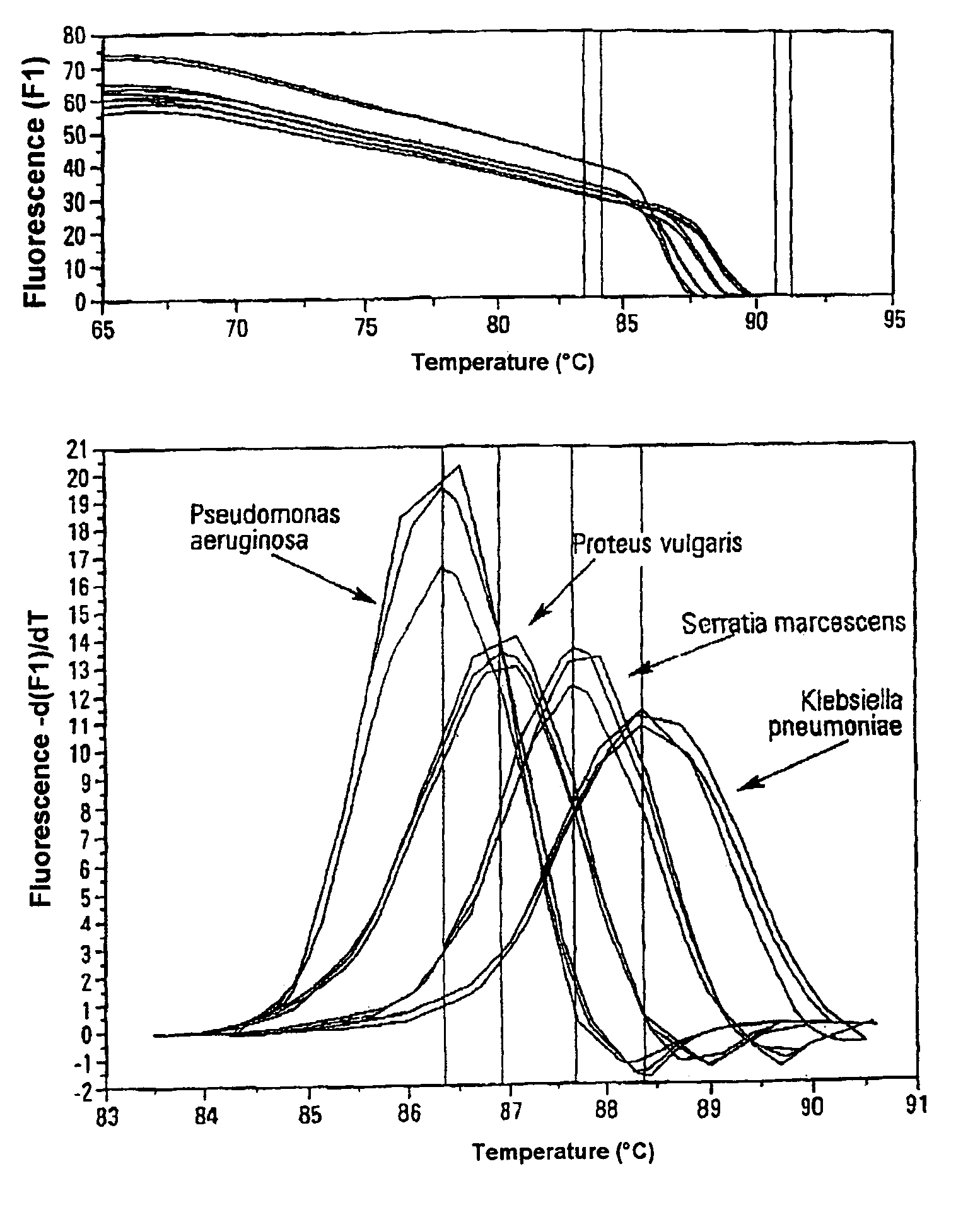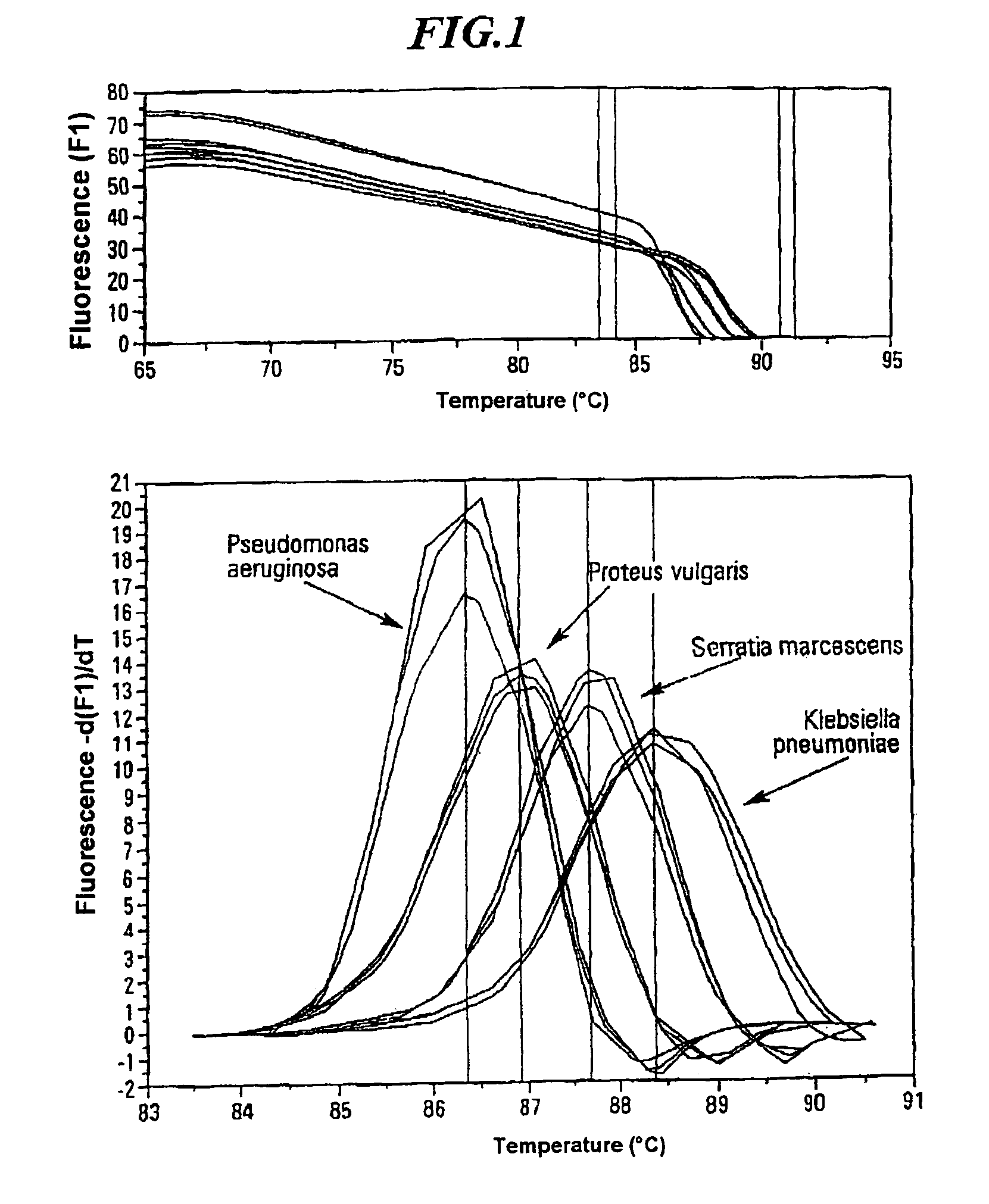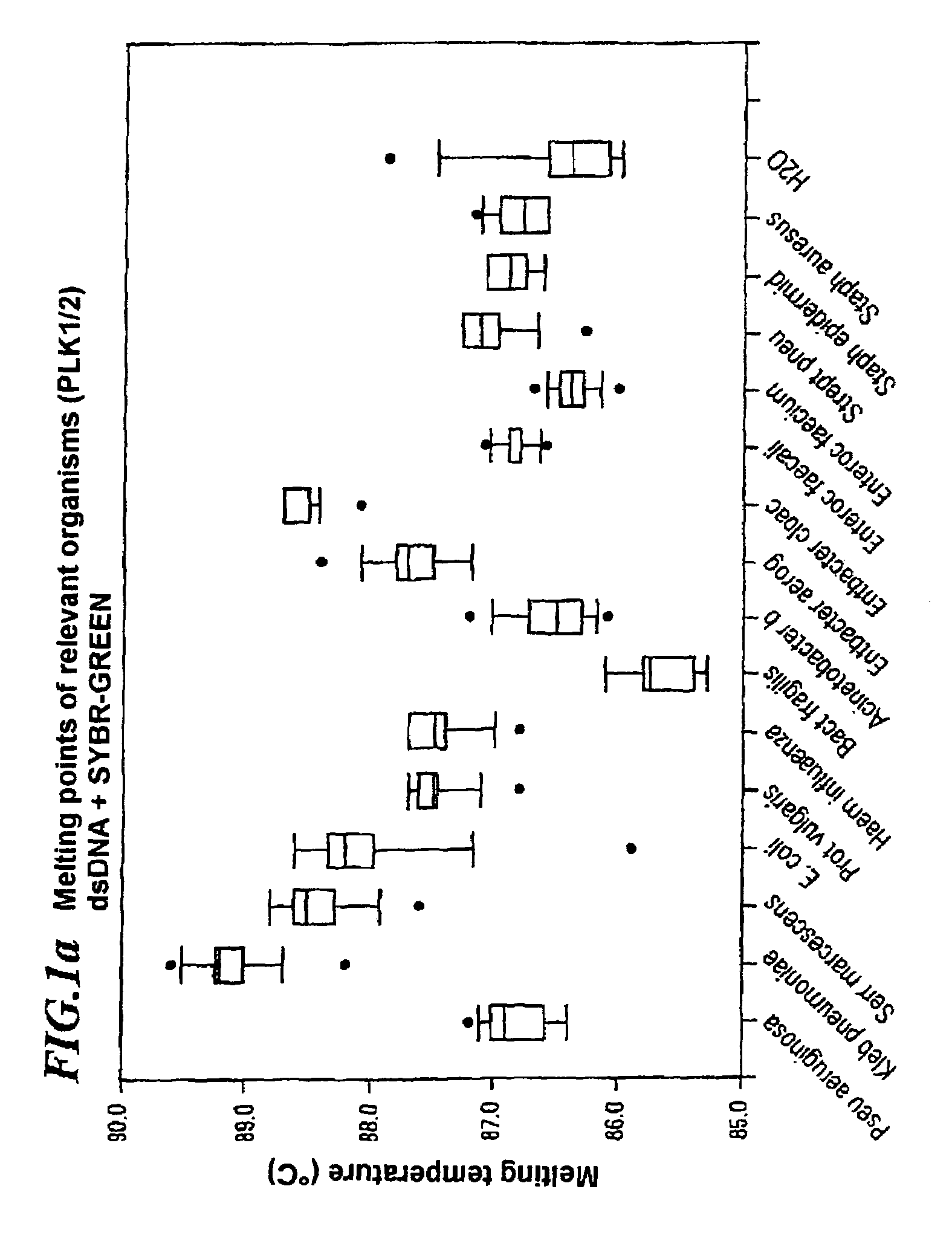Method for indentifying microbial DNA or RNA
a dna or rna technology, applied in the field of rapid identification of microbial dna/rna, can solve the problems of inability to inability to reliably detect type of detection, and often takes several days, so as to speed up diagnosis
- Summary
- Abstract
- Description
- Claims
- Application Information
AI Technical Summary
Benefits of technology
Problems solved by technology
Method used
Image
Examples
example 1
Isolating the DNA from Whole Blood:
[0102]In order to isolate the free bacterial DNA from patient plasma, whole blood is collected in an EDTA whole-blood tube (3.2 ml; Sarstedt). After having been withdrawn, the whole blood is immediately centrifuged at 2000 g for 3 min. The plasma, forming the supernatant, is carefully drawn off from the cellular components. The plasma is either subjected directly to further processing or stored at −25° C.
[0103]All the DNA preparations are carried out using the “High Pure viral Nucleic Acid Kit” nucleic acid isolation kit supplied by Roche Molecular Biochemicals. The centrifugation steps are carried out in a Heraeus centrifuge. An Eppendorf thermomixer is available for the incubations. Eppendorf pipettes are used in the work. All the pipette tips are autoclaved and fitted with filters. (The principle is described by Vogelstein, B. and Gilles in D. Proc. Natl. Sci. USA 76, 615–619, the entirety of which is hereby incorporated by reference.).
[0104]The...
example 2
Preparing a Patient Sample (BAL)
[0115]A bronchioalvaeolar lavage (BAL) using water—this means that water is introduced, using a bronchoscope, into the lung, for rinsing, and then aspirated once again—was prepared. For this, 200 μl of BAL were worked up using the ROCHE High Pure Viral Nucleic Acid Kit—i.e. they are treated with 200 μl of working solution, consisting of 200 μl of binding buffer (6M guanidinium chloride, 10 mmol of urea, 10 mM Tris-HCl, 20% TRITON X-100 (octyl phenol ethoxylate) (v / v) in 25 ml, pH 4.4 (25° C.)), in which 2 mg of poly(A) carrier RNA lyophilisate are dissolved, and then treated with 40 μl of proteinase K solution (90 mg of lyophilized proteinase K+4.5 ml of doubledistilled H2O) . After the aqueous proteinase K solution has been added, the whole is thoroughly mixed immediately and incubated at 72° C. for 10 min. After incubation, the samples are treated with 100 μl of analyticalgrade isopropanol and mixed thoroughly. A high pure filter tube containing a s...
example 3
Amplifying the Isolated Bacterial Nucleic Acids Using Labeled Consensus Primers and Labeled Gram+-Specific and Gram−-Specific Probes
[0118]2 μl of mastermix, 2 μl of Fast Start Mix f. hybProbes-Roche, 2.4 μl of 25 mM MgC12 in H2O, 10 pmol of PLK 1 primer and 8 pmol of the fluorescence-labeled backward primer IFL are in each case added to 2 μl of sample solution containing Bacteroides fragilis, Pseudomonas aeruginosa, Escherichia Coli and Klebsiella pneumoniae. The IFL primer is labeled with fluorescein on its penultimate thymidine base such that the amplified DNA always contains a fluorescein label which is incorporated close to the specific region of the 16S region. The Roche FastStart Mix is preferably used for PCR. 3 pmol of the gram(+) probe ISP2, which is labeled with LC705 on its last guanidine, and 3 pmol of the gram(−) probe ISN2, which is labeled with LC640 on the thymidine at the 3′ end, are added and the mixture is diluted with dist., highly pure H2O to 18 μl.
[0119]Masterm...
PUM
| Property | Measurement | Unit |
|---|---|---|
| pH | aaaaa | aaaaa |
| volume | aaaaa | aaaaa |
| volume | aaaaa | aaaaa |
Abstract
Description
Claims
Application Information
 Login to View More
Login to View More - R&D
- Intellectual Property
- Life Sciences
- Materials
- Tech Scout
- Unparalleled Data Quality
- Higher Quality Content
- 60% Fewer Hallucinations
Browse by: Latest US Patents, China's latest patents, Technical Efficacy Thesaurus, Application Domain, Technology Topic, Popular Technical Reports.
© 2025 PatSnap. All rights reserved.Legal|Privacy policy|Modern Slavery Act Transparency Statement|Sitemap|About US| Contact US: help@patsnap.com



